Applying for a Partner Visa is still possible during the pandemic – here's what you should know about Australian Partner Visas in the COVID-19 Era.
-
More placements are available for Partner Visas in FY 2020/21
Placements for Partner Visas increased to 72,300 people for Australia's 2020/21 Migration Program, which is the bulk of the 77,300 placements available in the Family Stream. In contrast, in 2019-20, the migration program delivered 37,118 Partner Visa placements and in pre-pandemic 2018-19, there were 38,918 Partner Visa placements delivered. Australia's COVID-19 Pandemic recovery plans aim to facilitate family reunion – particularly for partners, and this is reflected in the migration program planning levels.
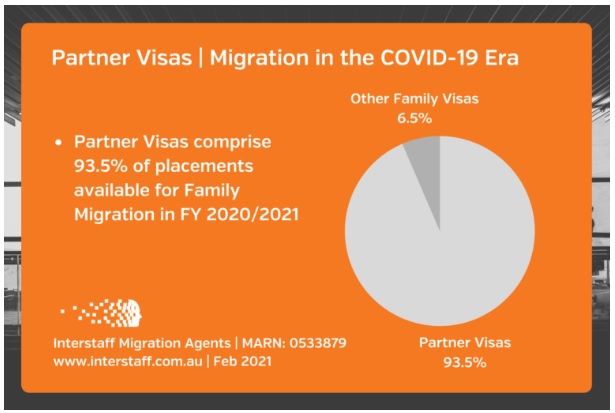
-
The Australian Government is prioritising Partner Visa processing
In February 2021, the Government informed the Migration Institute of Australia that while other visa options may not be possible for travel at this time, more resources at the Department of Home Affairs are being dedicated to processing Partner Visas. Our migration agents have noticed this first-hand in an increase in Department 'Requests for Further Information' for Partner Visa applications. It appears the Government is committed to filling the increase in Partner Visa placements planned for the 2020/21 migration program.
-
You can apply from either Onshore or Offshore
In Australia,there are two main types of Partner Visas – 309/100 Partner Visas (must apply 'Offshore') and 820/801 Partner Visas (must apply 'Onshore' within Australia).
During the COVID-19 pandemic, it is still possible to apply for a Partner Visa from onshore or offshore, although the Government may prioritise onshore applications. The below graphs show the trend in Partner Visa grants for offshore and onshore applications throughout 2020.
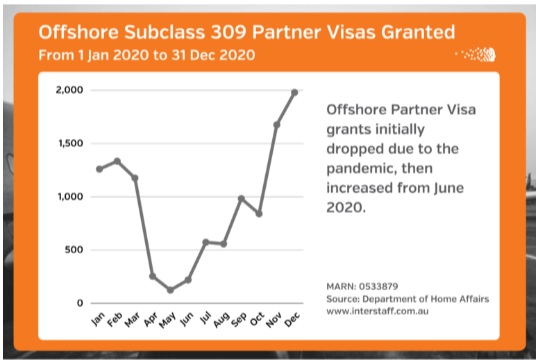
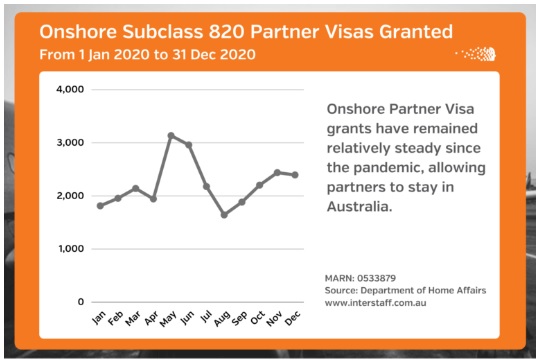
It is important to note that applying for a Partner Visa from Offshore (a Subclass 309/100 Visa) may involve being separated from your loved one for a long period of time. The current Government processing time for a Subclass 309 Partner Visa is 18 to 23 months.
Applying for a Partner Visa from Onshore (a Subclass 820/801 Visa) also has a long processing time – currently 23 to 28 months. However, the applicant can stay in Australia with their partner from the time of applying for the Partner Visa to the time it is granted. Here's an example of the Onshore Partner Visa journey.
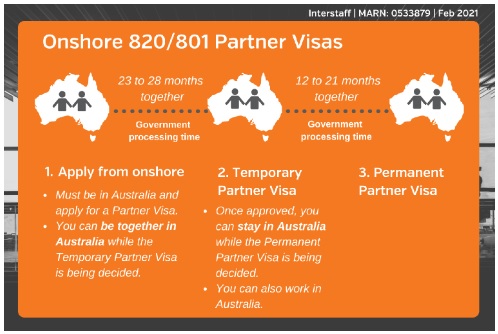
-
Subclass 309 Partner Visa applicants currently in Australia may be able to access a concession
From 27 February 2021, the Government introduced a temporary concession for the 'Offshore Visa Grant Requirement' that usually applies to Subclass 309 Partner Visa applicants.
Applying for a Partner Visa involves two stages – a Temporary Partner Visa and a Permanent Partner Visa. The Offshore Visa Grant requirement usually requires an applicant to be outside of Australia to have their a Temporary Partner Visa granted.
Given that it is difficult to depart Australia due to COVID-19 travel restrictions, the temporary concession allows Subclass 309 Partner Visa applicants to remain in Australia without having to fly out of the country to have their Temporary Partner Visa (the Subclass 309 Visa) granted.
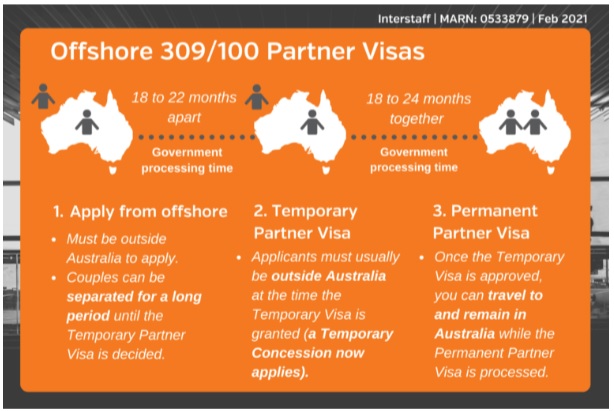
-
Partner Visa holders are exempt from Australia's current international travel bans - except for Subclass 300 Prospective Marriage Visa holders
With international travel restrictions in place, it can be difficult to know if you can still travel to Australia. Many visa holders are still ineligible for a Travel Exemption to come to Australia at this time.
Subclass 309/100 and Subclass 820/801 Partner Visa holders are automatically exempt from Australia's international travel ban restrictions and can still come to Australia. Unfortunately, Subclass 300 Prospective Marriage Visa holders are not automatically exempt from Australia's international travel ban restrictions and may not be able to enter Australia at this time.
Prospective Marriage Visa holders can request a Travel Exemption for consideration on a case-by-case basis, however an intention to marry may not be considered sufficient to demonstrate that a person is an immediate family member of an Australian citizen or permanent resident.
The Government processing time for Subclass 300 Prospective Marriage Visas is currently at 18 to 29 months. A temporary concession may however apply to Subclass 300 Prospective Marriage Visa applicants whose visa is granted from 27 February 2021. These visa holders may be eligible for a visa grant period of up to 15 months (increased from 9 months) at the discretion of the Department.
The content of this article is intended to provide a general guide to the subject matter. Specialist advice should be sought about your specific circumstances.
